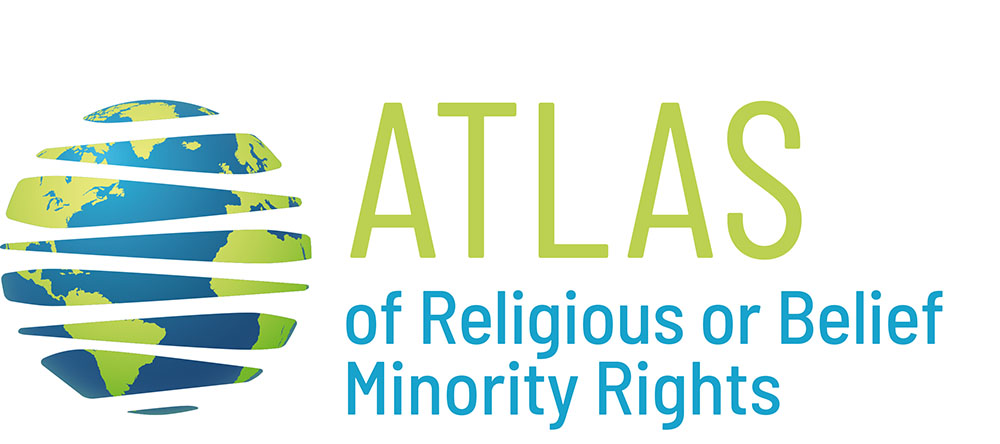Orthodox Christianity (or Eastern Orthodoxy) is the second-largest branch of Christendom, numbering approximately 260 million faithful. It operates as a Communion composed by 14 autocephalous or independent churches, as well as by some autonomous metropolises and archdioceses under their jurisdiction. Broadly speaking, the Communion is largely composed of national churches and structures, which hold jurisdiction within the boundaries of their own countries. In this context, the Ecumenical Patriarch of Constantinople is recognized as primus inter pares or “first among equals” by the Orthodox Churches.
Eastern Orthodoxy is noticeable for the heterogeneity of its religious geography within the European continent. In fact, it is historically the majority religion in Eastern and Southern European countries, while it is a recently-emerged religious minority in Western and Central European countries (although there are small autocephalous churches in both Poland and Czech Republic/Slovakia’ territories which became autocephalous respectively in 1924 and 1951). With respect to the latter regions, the first group of Orthodox immigrants started to arrive in Western Europe at the beginning of the 18th century for both political and economic reasons. In particular, a relevant Russian Orthodox community settled in France - and to a lesser extent in neighboring countries - as a result of the socialist revolution in 1917.
However, the initial accelerations into Orthodox migration flows occurred with the fall of the Soviet Union and the implosion of the socialist countries in the 1990s. The second acceleration occurred due to European integration and European Union (EU) membership of Eastern European countries. Currently, Orthodoxy is establishing itself as the second or third major Christian religion in Western and Central European countries (Austria, Belgium, France, Germany, Italy, Portugal, Spain and Switzerland). On the other hand, it remains the majority religion and the main socio-cultural marker, especially with respect to the national identity, in its traditional territories (Bulgaria, Byelorussia, Greece, Moldova, North Macedonia, Romania, Serbia and Ukraine).
Orthodox Christian Churches face multiple challenges related to their recent establishment abroad, as well as to their significant demographic expansion over the last 15 years. Foremost, a main challenge concerns the inclusion of these churches within the legal systems of the new countries, such as giving to them a proper legal status and then potentially signing a mutual agreement with the state. For the Orthodox Churches, this legal inclusion can recognize or extend their rights as a religious minority (for instance, serving in prisons and hospitals, or teaching in state schools) and give them access to state funding.
Moreover, another main challenge for Orthodox immigrant communities regards their chances of finding or obtaining new places of worship. In this context, Orthodox groups abroad are also progressively changing their nature, shifting from a temporary to a permanent status, particularly through the purchase of dismissed Christian Churches or secular buildings. Thus, since this religious minority is experiencing a growing necessity for (temporary and permanent) places of worship, it also requires clearer states’ rules and consultative practices for abiding by them.
Finally, another fresh and sensitive issue seems that of introducing Orthodox clerics into the fiscal systems of the host countries. Some of these clergymen perform their religious duties as a full-time job, and should be legally framed as workers - like the clerics belonging to Christian (Catholic or Lutheran) majority religions - in order to have access to rights relating to retirement and family benefits.
Against this background, the paths of Orthodox Christian settlement have not been marked by cultural tensions and issues, differently from those that shaped the rooting of other religious minorities into Western, Central and Northern Europe. Broadly speaking, the Orthodox customs and beliefs are not significantly different from those of the host countries’ populations. From the cultural perspective, Orthodox diasporas therefore appear as an Eastern Christian minority settled within countries socially marked by a Western Christian majority.
Lastly, persisting in European countries with an Orthodox majority are some issues regarding the transposition of certain EU norms and procedures. Although through different approaches and stances, over the last two decades Orthodox Churches in South-Eastern Europe have led a general resistance to some EU reforms and measures. Specifically, they have mobilized against some national adaptations that would have reshaped their historically close church-state relations, and challenged their conservative teachings on ethical (abortion and euthanasia), sexual (LGBT rights) and family (gender and children rights) issues.
On the other hand, at the same time Orthodox Churches have gradually elaborated a more constructive presence in the EU institutions, inaugurating ecclesial representations in Brussels and establishing a Committee of the Representatives of the Orthodox Churches in European Union (CROCEU). Thus, they have become actual religious actors within the EU milieu, also founding and organizing metropolises, exarchates and dioceses in all European countries where Orthodox Churches are established.
Marco Guglielmi
INTERACTIVE INFOGRAPHICS
0 respect of international standards
-1 restriction of rights
-1 high gap between religious majority and minorities
No data shown for countries where the Church is the majority RO
0 respect of international standards
-1 restriction of rights
-1 high gap between religious majority and minorities
No data shown for countries where the Church is the majority RO

 MENU
MENU
 CLOSE
CLOSE

